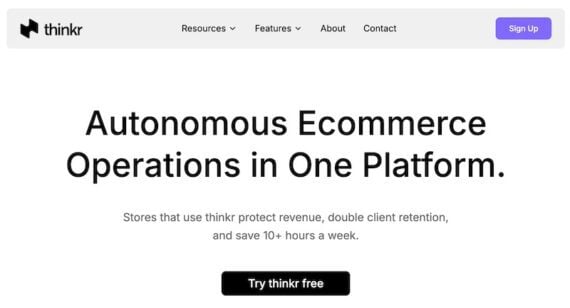This week’s episode of “Ecommerce Conversations” continues my masterclass series on entrepreneurship. Thus far in 2025 I’ve addressed branding and profitability hacks.
For this installment, I’ll focus on hiring, specifically for marketing, operations, and product personnel.
My entire audio narration is below. The transcript is condensed and edited for clarity.
Owners often consider employee count a measure of success — the more, the better. Not me. I prefer a larger company with few employees, not the opposite.
In my experience, a common mistake is hiring to extinguish short-term fires but without a clear long-term plan. Another is hiring based on expected growth. At Beardbrand, my company, I prefer working with consultants, agencies, or marketplaces such as Upwork to establish systems. I’ll hire a W-2 employee when there’s enough demand to justify a full-time role.
I avoid hiring generalists to perform multiple roles, such as email, social media, and Amazon. Specialists are expensive but usually worth it.
Here are Beardbrand’s eight steps to bring in the right people at the right time.
1. Attract Candidates
My first step is to make a job exciting and irresistible — a dream opportunity. The goal is to attract as many qualified candidates as possible. I highlight what makes the role and our company unique. I’ve used landing pages and videos to showcase our culture. I advertise on general and niche job boards.
We’re clear about what we want in a team member. We check all references and use industry jargon in the job posts to screen unqualified applicants. We ask candidates to take the Myers-Briggs test to help us understand their personality and potential fit with our company.
2. Filtering Applicants
I start with a candidate’s cover letter, not the resume. Resumes often contain fluff, but a thoughtful cover letter typically demonstrates applicants’ understanding of the role and how their skills apply. I look for personal explanations, not templates. I also prioritize communication skills, especially for remote work where clear dialogue with vendors, customers, and teams is essential.
3. Basic Skills
The third step is a simple skills test with two parts. First, candidates take a 1-minute typing test to assess their familiarity with computers, which is key for ecommerce. Faster typing often signals more digital experience.
Second, I ask them to write a short paragraph on each of our core values: freedom, hunger, and trust. This emphasizes Beardbrand’s priorities to gauge cultural alignment.
4. Phone Screening
Once a candidate demonstrates solid writing, strong typing, and a promising resume, we do a 15-minute phone screening. We call unscheduled to see if they answer, leaving a message if needed.
If they call back, we’ll ask key questions. Are they okay with working remotely? What about in-office? Are they aligned with the compensation? Do they understand the duties?
This step, the phone call, ensures clarity and prevents misaligned expectations. It also reveals how naturally they communicate. We remind them on the call to organize reference checks.
5. Competency Skills
This step assesses whether candidates can perform the role. We observe how customer service applicants prioritize and respond to tickets. We bring graphic designers in the office for a real-time test and literally watch over their shoulders as they work through a project. It’s intense and awkward, but it shows how they solve problems — whether they ask for help, fumble through, or use tools such as Google. I want to observe their creativity under pressure.
We also use the Criteria Cognitive Aptitude Test to measure problem-solving ability and to compare candidates.
If the position is remote, we’ll ask candidates to share their screen during the test. AI tools can fake output. For Beardbrand, AI in customer service is acceptable, but we clarify our AI boundaries with applicants. Watching them work on a standardized test helps identify their fit for the role.
6. Grading Interview
At this point in the process, we focus on the candidate’s past jobs. We remove fluff questions. We ask about their previous supervisors and let them know we’ll contact the last three. This helps us understand the candidate’s behavior and performance trends.
7. References
Reference checks are a critical part of our hiring process. Candidates provide their references’ names and contact information and ensure they are aware we will reach out. We ask candidates to suggest a time that works best for their references.
We let them know we’ll be calling from a specific phone number. The reference call takes about 15 minutes. We’ll verify what the candidate told us. Some companies skip this step, but for us it provides valuable insight into a candidate’s fit, skills, and cultural alignment.
Only after completing the reference checks do we extend an offer.
8. Hire with Confidence
We never hire someone thinking we can fire them if they don’t work out. Hiring someone under those conditions leads to hardships — having to let them go, take over their work, and undo all the time spent on training.
We hire only when confident the candidate will thrive in our company.







